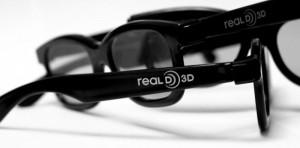3D Dental Copywriting That Compels People to Choose Your Services

Saying something is good, great, state-of-the-art, etc. makes a point. But if you want your dental copywriting and dental marketing content to have “punch” you must go deeper.
I occasionally watch a local news program during lunch. It’s one of those noontime programs that features entertaining, informative special segments during the hour long broadcast.
The host anchor made a comment during an episode’s cooking segment that I’ve laughed about many times since. The segment featured the use of beer in a particular recipe for a meat based pie.
The guest cook discussed the various ingredients and in particular the use of beer for added flavor. The host anchor responded off-the-cuff and enthusiastically – “I don’t drink beer…but I sure do like it in my pie!”
I don’t know why the anchor’s statement made me laugh. But after doing so, it made me think.
Products and services have multiple benefits.
Beer, for example, is a refreshing, enjoyable beverage. Even so, many don’t prefer drinking it…but they will add it to a recipe.
That said, the dominant benefit that’s used to market beer is what? It’s not people sitting around, partying, pouring beer into a kettle on a stove top.
There are dominant benefits and there are dimensional benefits.
Copywriting master, Clayton Makepeace says there are “3 deadly blunders” made in marketing copy and content.
- Mistaking features for benefits.
- Mistaking processes for benefits.
- Missing different types of benefits.
His solution: “Drill down to the real, bottom-line rubber-meets-the-road benefits your product (or service) provides.”
Someone “drilled down” and discovered (perhaps while sipping an ice-cold, refreshing brew) that beer adds flavor to a favorite recipe. Beer as a refreshing, relax-with-my-friends beverage is a dominant benefit. Beer as a flavor-enhancing ingredient in your main course is a dimensional benefit.
3D your products and services to add compelling power to your dental marketing copy and content.
Comprehensively inventory your product/service features.
List every objective fact your product/service has. What’s unique, special, compelling, interesting, etc. about the dental service you’re promoting right now?
List everything you can think of.
- What’s its purpose? What does the service do for your patient/client?
- What are its physical characteristics? How will a patient/client experience it visually, by sound, taste, etc.?
- How long does it last? What will the experience be like? When will results be seen? How does it compare?
- What’s been said about it? How have others experienced it? How is it guaranteed?
- What choices are offered? Size? Color? Flavor? Is it customizable?
- How is it priced? Is it dividable by cost per year, month, week, or day?
“Attach a ‘Why’ to each feature”
Feature: Digital x-rays are the latest, state-of-the-art technology. Why: Faster image views means less time in the operatory.
Feature: A TV in every exam room. Why: More comfortable for the patient and time passes quickly during the appointment.
The “Why” forces you to think about benefits. People are sold by benefits not features.
Transform features into benefits.
Force the all-important question before you promote your product/service. And the question is: “What’s in it for me?”
Features must connect. Your patients or clients must experience (via your copy/content) how the service directly improves their life.
What fear does it help them overcome? How does it save them time and money? What have others experienced by using it?
“Dimensionalize each benefit.”
Feature: A TV in every exam room.
Why: More comfortable for the patient and time passes quickly during the appointment.
Benefit: Your appointment is over before you realize it.
Dimensionalized benefit: Great for fidgety kids. The time zips by. In fact, just last week little Jimmy asked if he could stay longer at the office!
Get “emotional” by connecting each dimensionalized benefit with a dominant resident emotion.
Think about how your patient/client will FEEL personally after they’ve enjoyed each benefit your service/product provides.
And there’s another emotional perspective people have too.
How will your patient/client feel as others see them enjoying your services’/product’s practical benefits? That’s an even deeper question.
There’s more to your services and products than meets the eye. Go deeper and tap into the compelling reasons people will buy-in.
Question: Why is it easier to focus on features than diving deeper into benefits? How is dimensionalizing your benefits useful to you? Comment.
3 Compelling Ways to Use Story in Your Dental Marketing Content

Stories have power. It’s why you enjoy a night at the movies or a compelling summer beach read.
And speaking of compelling – that’s the super-power element of effective stories. They compel you.
Your dental marketing content will succeed these days over the marketplace noise for one reason. And you should evaluate your copy and content by this emerging standard.
Story sells.
A recent post on Copyblogger compelled me to explore more deeply this whole idea of story telling content. I’ve been a fan of it for awhile.
The Copyblogger article carried me to another dimension in my future writing for clients. And it will do the same for you if you value having your dental marketing content stand out.
Sean D’Souza says your content storyline must have three core elements to compel a response.
1-The sequence – the events (points, ideas, etc) that build upon each other and create meaning.
2-The suspense – the drama of what’s happening, what’s up, or what’s approaching.
3-The roller coaster – the up and down and all around of good to bad to good, etc.
The reason story works.
A fair amount of marketing content is full of hubris. It talks about YOU, YOU, YOU.
Overused phrases like “state-of-the-art,” and “We’re proud to (announce this or that),” offer very little compelling value.
Where’s the story? And if there is one how does it benefit the reader?
Leaving out compelling benefits mutes your storyline. It’s like reading a clearance-rack biography or paying good money for a 1-star movie – boring and disappointing!
A story (your job: to find it – or hire someone who can – and tell it) has the advantage of a logical and compelling sequence of events. Add in some suspense and a roller-coaster of features and benefits to draw your reader in.
What does this have to do with dental marketing copy and content? Good question.
Enough “suspense.” Here’s the scoop.
3 Story-Intense Dental Marketing Content Tools to Compel Interest in Your Services
1-Case studies
These are story super-powers. A case study is basically a success story.
A dental case study would include a “villain” such as oral cancer, periodontal disease, bleeding gums, yellowed teeth, crooked teeth, etc. Your sequence of events would include the problem, product/treatment/service, and the solution story.
When a patient or prospective client finishes reading this brief success story they’re compelled to take action. Your offer is the action that will solve their problem and create a profitable outcome for you.
2-Blog posts
Appear regularly on your reader’s radar. Blog posts have viral capacity because they create a “what’s next?” response.
Read a compelling blog post and you’ll anticipate the next one. Blog content is evergreen and ever evolving.
Exceptional bloggers earn a spot on your newsfeed. You bookmark their content like you do a favorite passage in a novel or non-fiction book.
Your blog posts will move up the list of fave-reads when you add in story factors.
Keep your posts to between 350 and 500 words on average. Tease the next post by not giving away too much “plot.” Your readers will thank-you by returning again and again to follow your “story.”.
Blog posts build trust too. Become a trusted expert by delivering trusted content week in week out.
Eventually readers become patients, clients, or customers. They will buy/seek your services when you’ve proven yourself as a trusted source of expertise via your blog content.
3-Email
Email is a perfect (and overlooked) canvas for story based copy. Avoid jumping in with your promotion or facts that tip the reader that this is another sale-sy email.
Lead with a story. How?
Listen to culture, current trends, local events, your own experiences. Use these to craft a story that introduces your email.
Lead with a story in your email copy. The added drama will compel your reader to stay with you.
Two essentials – make a good transition from the story to the email purpose (promotion, information, etc.).
And…don’t miss this…
Write a subject line that prompts the email to be opened. Many emails fail at the inbox level because the subject line is anything but compelling.
An email subject line is like a movie trailer. It must move your reader to see the full feature.
Add some drama to your dental marketing copywriting and content. Use story to compel interest and your expertise will profit.
Which content “tool” do you most often use to promote your dental services?
Fundamental Reasons Your Dental Email Promotions Succeed
 The hummingbird attracted to our patio feeder is a consistent creature. In a strange sort of way it’s habits remind me about the core value of dental email marketing content.
The hummingbird attracted to our patio feeder is a consistent creature. In a strange sort of way it’s habits remind me about the core value of dental email marketing content.
Our hummingbird friend counts on the ample supply of sweet, red colored sugar water we provide. Because it returns many times a day it’s vital that we not disappoint.
Email remains as a consistently trusted source of content delivery. In spite of its spam-able potential, your dental services will benefit from using it as a consistent list communication tool.
And speaking of benefits – dental email marketing success depends on your commitment to deliver useful, beneficial content.
Email copy smells like spam the moment you abuse it.
Avoid the hand-slap by remembering it’s a permission based channel – so don’t intrude on people’s in-box privacy unless invited.
- Include an opt-in request on all your business or practice forms.
- Simply ask new patients and clients for their email address at their first appointment/meeting or phone conversation.
- Word your request appropriately. Say, “Is there an email address we can use to contact you…?”
People are accustomed to digital communication. Like text messaging, email is an acceptable and normal channel in people’s digital world – so be unafraid to ask for the connection.
Their permission opens the door to casual, friendly, and consistent communication with you.
Well-crafted and well timed email content delivers useful information. Connect your dental email content to a service, new promotion, or timely need and measure the impact.
The hummingbird returns to our patio because he’s accustomed to our generosity. Patients and clients will respond to your email content as you consistently provide them a beneficial reason to do so.
Be generous with your offers and content value. Because you are, people will trust their in-box, time, and dollars to you.
Email loses it’s impact when it looks, sounds, and feels like every other sale-sy message that pings their in-box. Keep your dental email copy relevant to your reader and their needs.
Much of this sounds simplistic, I realize.
There are reasons an email is opened and there are reasons it compels a response.
For now…
- Adjust to using email more consistently to promote your dental services.
- Ask for the opportunity/permission to email your dental patients and clients every chance you get.
- Acquire trust with useful, beneficial, generous email content.
There’s an art to dental email marketing. Stay tuned here for more tips related.
What hang-ups or challenges do you have about using email to promote your dental services? Comment…
4 Words That Can Transform Your Dental Marketing Copy
Benefits sell! That’s core to effective copywriting and the power language you need to promote your dental services.
The Sunday edition of my local newspaper featured two ads that got my attention. How they got my attention is what’s important to this post (realize henceforth – I’m more critical than the average reader).
First, it WASN’T the somewhat eye-candy graphics or the positioning on the page (two big deals to most newsprint advertisers). Second, it WASN’T the headline – at least in the way you might be thinking.
The ad’s colors and placement did draw my eye to it. But it was the headline that bothered me.
The ad writer did the common, believed effective, ad naseum, amateur, I-have-a-gazillion-ads-to-write-today-so-I’ll-take-the-easy-way, feature-first headline approach. And perhaps wrapped it up by asking the design department to throw in some cool colors and bold fonts so people notice.
I confess – I read the ad. Was I compelled?
That’s the question your copy must answer – is it compelling?
And copywriting that compels doesn’t lead with features (everyone does that) it leads with benefits.
This brings to mind a recent meeting I was in. Our dental hygiene team was discussing how to promote oral cancer screenings to our patients. Even though the service is undeniably beneficial and has a relatively low cost point (beyond insurance coverage) some patients aren’t compelled.
No doubt it’s a beneficial procedure. But how do you get to the compelling core benefits without dumbing-it-down with feature heavy content and graphics (what I’ve called “est-syndrome” in previous posts.).
Here are 4 words to keep front-of-mind when mining the benefits of your dental products and services.
1) Urgency (Think-if they don’t get this now the world as they know it will end)
Act now! Limited time offer! You must do better than that.
Give your reader a hot-seat reason to jump NOW to get your product or service.
How can you tell the story in the most compelling way? That’s the question.
Urgency isn’t just about prompting a decision. Urgency is about removing the gap as quickly as possible between decision and action.
2) Usefulness (Think – this is so practical…I must show them)
Not all products and services are ultimately useful. So it makes sense that the promotional copy lacks it too.
Do the hard work required to find a product’s or service’s usefulness that’s not obvious. The ultimate task of your copywriting is painting a picture of practical action.
Who’s using the product/service? What’s happened to them? When did they first discover it’s effectiveness? Where are they looking to use it next?
3) Uniqueness (Think – no one has the “angle” we do. And that “angle” is…)
Being unique is overrated. Especially when it’s confused with creative.
How creative your copy is doesn’t necessarily mean it’s unique. You must find a way to tell the story in a way no one’s told it yet.
This may or may not be the most creative. A unique message is about captivating a person’s buying emotion in a way no one has before so the buying decision keeps repeating itself.
4) Ultra-specific (Think – then think again…and again until it’s crystal clear)
The problem with many marketing messages is just that – they contain more than one message. The key to specificity (love that word) is funneling all the possible ideas into one, compelling message.
Too many messages in a single promotion confuses. Compelling copy is about clarity.
It’s the difference in a laser and a light-bulb. One illuminates, the other penetrates.
Certainly, the end result you desire is more than merely illuminating your “market.” Why not penetrate it?
I’ll admit I’m more critical of marketing copy than the average reader. But I know good copywriting when I see it.
And usually it’s because I’m reaching for my wallet.


